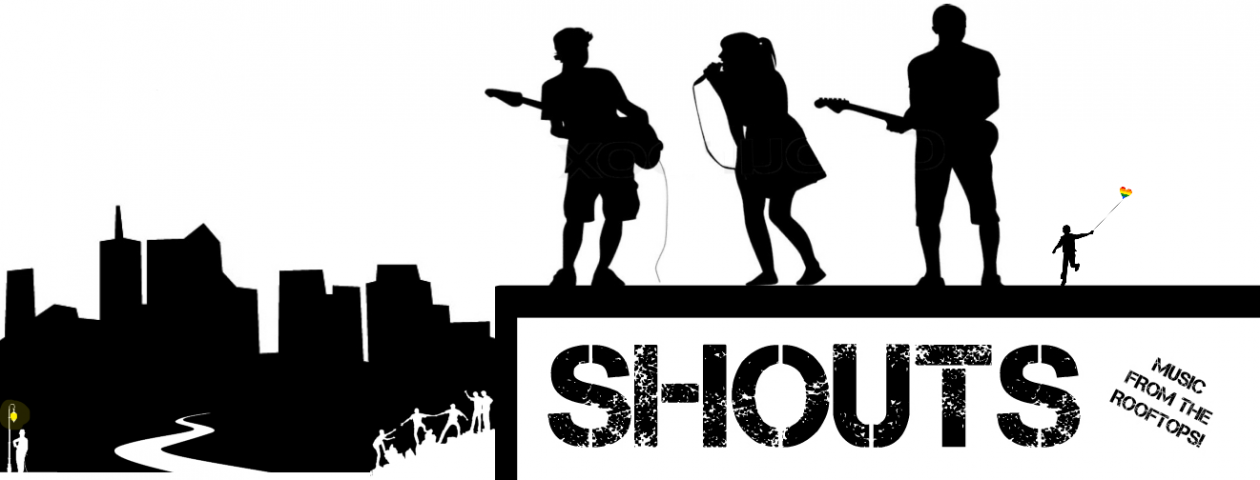Language and songs go hand in hand

This article was written by Renata Yazzie and originally published by Source NM on May 31st, 2022.
Songs are historical documents, narrating the histories of our origins, geographies, relationships and more. Songs and language are so intimately tied and their survivance depends on each other.
“Kiowa people sing Kiowa more than they speak Kiowa,” said Maxwell Yamane, a Japanese-American Ph.D candidate in Ethnomusicology at the University of Maryland.
The sentiment is also echoed by Native musicians across genres, including by Mato Wayuhi, Lakota producer and composer most well-known for scoring the hit TV series, “Reservation Dogs.”
“Being Lakota, [song] is so integral to the culture,” Wayuhi said in an interview. “Even if you don’t sing or play anything, the musicality of the culture is so formative on kids growing up.”
The Native American Languages Act (NALA) was passed by Congress back in 1990, allowing Native American languages to be used for instruction in schools and affirmed the right of Native American children “to express themselves, be educated, and assessed in their own Native language.”
Just last year it was amended by Senators Brian Schatz (D-HI) and Lisa Murkowski (R-AK) to request federally mandated evaluations that ensured NALA was being carried out appropriately. The evaluations track the status of Native American languages every five years, and the results guide federal financial resources for language revitalization projects where they are most needed.
Yamane is researching how songs are used as a tool in response to calls for language reclamation and revitalization, and how federal policy such as the NALA is shaping the future of Indigenous sonic sovereignty.
Yamane describes all the ways songs could be used as a tool for language learning. Language teachers have options to teach songs from their community passed down from generations ago that are both composed in the language and musical style of their community. Other teachers opt to teach English songs that have been translated into a Native language. Sometimes there is an associated dance or instrumental accompaniment taught, but the core of the lesson is in participatory singing.
The elders in the Kiowa community that he joins in prefer to use hymns for teaching words not commonly found in everyday conversation, Yamane said. Kiowa hymns are entirely lyrical and usually do not contain vocable syllables (think: “fa la la la la” in “Deck the Halls”) like songs from other genres might. The hymns were composed primarily by Kiowa contributors and often contain lyrics that promote better understanding of Kiowa worldviews and philosophies — despite originally being written for Christian contexts.
“Songs and music are woven into the fabric of an Indigenous communities’ cultural ways. Songs are often viewed as being their own entities capable of interacting in sonic relationships with listeners of all backgrounds.”
And songs govern. They provide structure and protocol for a variety of events and situations. Songs heal and bless, functioning as both medicine and prayers. Together, they form the center of socialization and the cornerstone of our lifeways. Because songs are so important to the continuance and affirmation of cultural ways, one would think that it is within the best interest of tribal governments to claim sovereignty over the sonic realm of their communities.
Trevor Reed is a Hopi citizen and associate professor of law in the Sandra Day O’Connor College of Law at Arizona State University. Reed completed a Juris Doctorate and a Ph.D in Ethnomusicology simultaneously from Columbia University in 2018. His research focuses on Indigenous sovereignty and creative production.
He broke down exactly what the Native American Languages Act meant for Indigenous sovereignty. “It doesn’t really produce any enforceable rights for individuals, but it does reaffirm the inherent sovereignty of tribes to pass laws or make law in the area of language. So that means individual tribes can exercise their right to govern language.”
The right of a tribe to govern their language has been most recently exercised in Standing Rock Sioux tribal courts with the banning of non-Lakota linguists and their organizations — Jan Ulrich, Wilhem Meya, the Lakota Language Consortium and The Language Conservancy — for a long list of offenses including, “breaking of traditional protocol,” ”breaking Tribal laws in the collection of our language,” and “commodifying and copyrighting our sacred language.”
In an article Reed wrote for the “Journal for the Copyright Society USA,” he states that “Congress has remained silent as to whether or not it intended copyright to apply on Tribal lands, and whether it intended to pre-empt Tribal laws occupying the same field as copyright.” The few cases addressing copyright issues on Tribal lands were split, he said, and did not offer a consensus.
Reed reminds us that, “music and sounds, it’s much different for us [Native Nations]…it could mean something totally different from what we think of when we’re thinking about something that’s copyrightable, like an album or a piece of sheet music.”
While enforcing copyright law would protect the sonic cultures of Native Nations from outsiders who have intentions to exploit, it could also suck the life out of them through overcomplicating bureaucratic measures. A copyright law encompassing all 574 federally-recognized Native Nations would be reductive, as each Nation has their own distinct laws, lifeways, languages, and sonic cultures.
Reed is a staunch advocate for tribes to claim sovereignty over their sonic expressions in a way that best fits their respective communities. As language and songs go hand in hand, “just like how the Native [American] Languages Act says that tribes have inherent sovereignty over language, I think tribes also have inherent sovereignty to govern music and it would be wonderful if more and more tribes exercise their rights in that area.”




